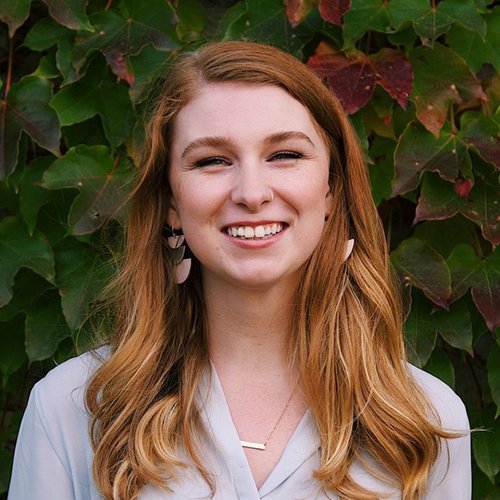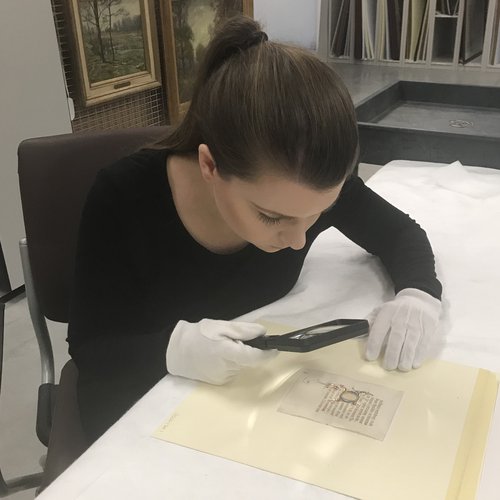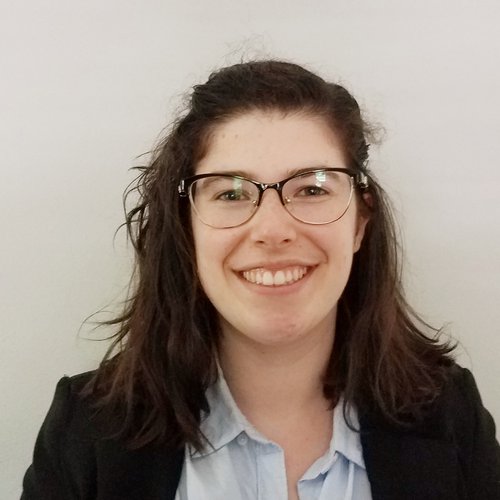
As they began their second year as Main Campus art history graduate students in the Department of Art and Music Histories, Kate Hill, Kelli Fisher, Tiffany Miller, and Tyler Valera recently shared their professional experiences as summer interns for museums in Syracuse and Washington, DC. Despite having to navigate the constrictions imposed by the COVID-19 pandemic, each student made significant contributions to and gained invaluable experience from their work at public and private institutions. The students’ internships were supported, in part, by summer research grants from the College of Arts and Sciences.
KATE HILL

Working as a curatorial intern at the Syracuse University Art Museum (SUArt), Kate supported the museum’s exhibition committee in developing the fall ’20 calendar focused on the permanent collection. Kate also worked on developing concepts, structures, and platforms for upcoming exhibitions, both virtual and “live.” Additionally, she was tasked with identifying gaps in the collections at SUArt, giving her the opportunity to provide supporting documentation for and championing new acquisitions.
Kate said that her internship with SUArt “has been wonderful as I…developed my curatorial and research skills and had practical experience with the online collection and The Museum System (TMS) database.”
KELLI FISHER

Kelli first began her work at the Everson Museum of Art during the spring ’20 semester under the guidance of Steffi Chappell, Assistant Curator, and also a graduate of the Main Campus art history program. Over the summer, Kelli’s work continued, but in a remote capacity. During the spring and summer, she updated records and wrote posts for the Everson’s blog. As she explains, “My first project involved researching manufacturers of American ceramics, stoneware, and crockery in order to update the Everson's collections database.” She also gathered information about Indigenous artists in the Everson’s collection, “in order to provide better specificity for the museum's records.” Kelli’s posts included one that featured the African American contemporary artist Mildred Beltré's artwork Where My Dream At? and another that highlighted ceramics made specifically for refrigerators in the 1930s.
About her experience, Kelli reflects “I really enjoy[ed] having such a wide range of topics to research for the Everson.”
TIFFANY MILLER

The Everson Museum of Art also hosted Tiffany this past summer where she worked alongside Paul Phillips and Sharon Sullivan under the supervision of Garth Johnson, Curator of Ceramics. Tiffany’s primary role was to review the groundbreaking catalogues of the Ceramic Nationals, a series of juried exhibitions which began in 1932 at the Syracuse Fine Art Museum (precursor to the present-day Everson Museum of Art). According to the Everson website, these exhibitions “ultimately sparked a major national interest in ceramic art and paved the way for museums around the country to collect and exhibit the work.” As a result of her work, Tiffany created a database of artists whose work was exhibited at the Nationals and a digital record of their exhibition entries.
Tiffany’s additional duties included researching Japanese sculpture in preparation for an upcoming exhibition and writing a blog post about an object by Maria Martinez (San Ildefonso Pueblo) in the Everson’s permanent collection. This post was based on a paper she wrote for Garth Johnson’s spring 2020 American Ceramics class. Tiffany learned a lot from the experience: “Writing for a different audience was challenging, and I learned how to prioritize points of information and use proper wording for multiple readers.”
TYLER VALERA

Over the summer, Tyler had the unique opportunity to work as a
Smithsonian Digital Volunteer for the Smithsonian Institute’s Transcription Center.
Tyler transcribed historical documents for the Archives of American Art, the National Museum of the American Indian, the National Museum of African American History, and Culture and the National Museum of American History.
According to Tyler, a typical Digital Volunteer session included “transcribing postcards, letters, and other personal items; reviewing the transcriptions of fellow volunteers; and submitting completed items for final review with the institution.” For this project, Tyler transcribed and reviewed documents in English, French, and German and she looked at records related to Cecilia Beaux, John White Alexander, and Henry Ossawa Tanner.
As with her fellow classmates, Tyler is grateful for the experience she gained and is glad to have been “a part of producing a more diverse range of research material at the Smithsonian Institution.” She explains that this work has solidified her interest in working with primary resources in her own research projects.
